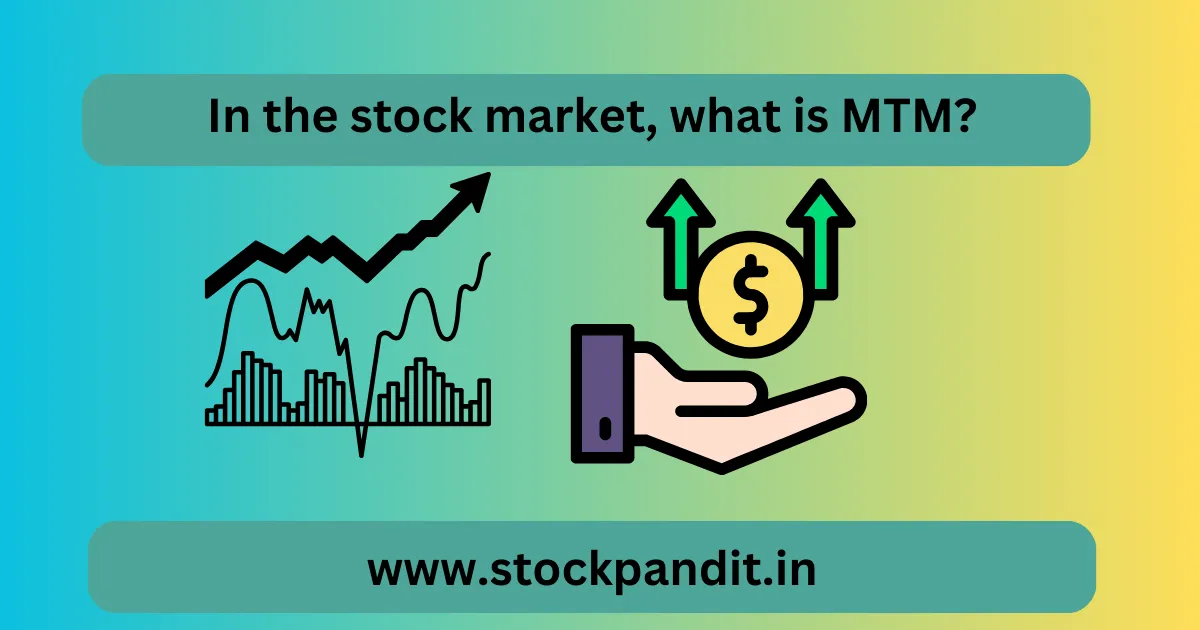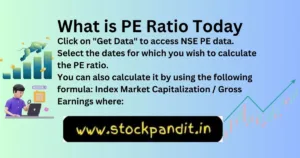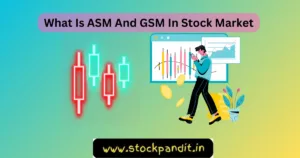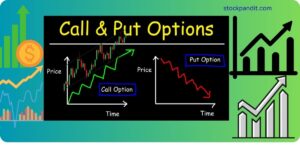For all parties involved in the market, knowing an asset’s current and fair worth is essential. That’s the purpose of MTM. Now let’s explore what MTM is and why it matters for pricing. Here is all about what is MTM.
What MTM Means in the Stock Market
The financial process of determining an asset’s fair value by modifying its price to reflect its current worth is known as mark-to-market, or MTM for short.
From the time of acquisition to the most current date, the value of an asset can increase or decrease. If a trader, investor, or business want to know the asset’s current worth, this gain or loss may have consequences.
For financial assets including stocks
MTM offers a precise representation of the present value of an asset while accounting for changing market conditions.
For financial assets including stocks, futures, options, and more, mark-to-market is crucial.
Because of this, it is essential for offering clarity and an accurate picture of a business’s financial performance in relation to its recent past.
MTM’s function in the Margin Trading Facility (MTF)
Similar to a trade scorecard, MTM is updated every day. At the conclusion of the trading day, it displays your securities at their current market value. In the Margin Trading Facility (MTF), where traders borrow money from brokers to trade, it is essential.
The Mark-to-Market value of pledged securities is the basis for determining the necessary margin in MTF. You must deposit additional money or securities to meet the margin requirement if the MTM of the securities falls below it.
If this doesn’t work, the broker may make a margin call and sell the pledged securities to make up the difference.
By ensuring that MTF traders don’t take on more than they can handle, mark-to-market helps brokers avoid being left holding the bag while trying to make up for the losses.
You May Also Like: What Is ASM And GSM 6 Stages In Stock Market
MTM in MTF example: what is MTM?
In order to begin trading under MTF, a trader must pledge shares valued at ₹10,000 as security. The 30% margin requirement is imposed by the broker. Thus, the trader’s account must always have a minimum balance of ₹3,000. In the share market, this is called a margin.
Day 1: The shares are now worth ₹8,000 as the market price declines. The new margin need is determined by the Mark-to-Market procedure as 30% of ₹8,000, or ₹2,400. There is still a safe margin on the trader’s account.
Day 2: The shares are valued at ₹6,000 as the market continues to decline. ₹1,800 is the new minimum required margin. Still secure.
Day 3: The share price plummets to ₹4,000. The required margin is currently ₹1,200. However, the trader has already taken a bigger position against the stock. There is a margin call from the broker.
In order to meet the margin requirement, the trader must now deposit more money or more securities. If not, the broker may sell the shares that have been pledged to cover the gap.
In order to prevent this, MTM trading keeps the trader informed about the necessary margin by maintaining a risk-reward balance.
Using MTM as a Tool for Stock Market Risk Management
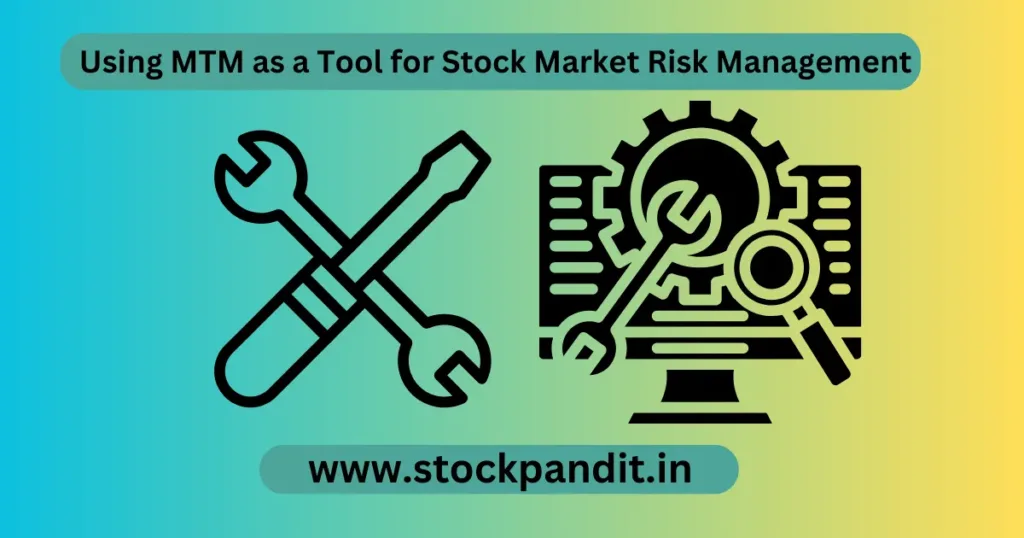
Mark-to-Market, or MTM, is a crucial trading tool that provides real-time risk evaluation. It is determined by comparing the transaction price and closing price for all open positions at the end of the day.
This “marking” establishes possible gains or losses, enabling traders to plan their next moves with knowledge.
Trading MTM essentially assists participants in the market in monitoring their daily gains and losses.
It helps to spot possible financial hazards, such getting a margin call, and it gives traders the ability to effectively manage risk and formulate well-informed plans.
MTM in Trading Futures and Options

Risk Management in MTM Computation
Importance of Managing Losses
Effective risk management is integral to successful trading. MTM computation highlights the importance of managing losses promptly to safeguard overall trading capital.
Strategies to Mitigate Risks
Traders can employ various strategies, such as setting stop-loss orders and diversifying their portfolios, to mitigate risks identified through MTM computation.
Real-World Examples
Practical Application of MTM Computation
To better understand the impact of MTM computation, let’s delve into real-world examples. We’ll explore scenarios where MTM played a crucial role in shaping trading decisions.
Case Studies Illustrating Its Impact
Case studies will provide insights into how MTM computation influences traders’ actions, both in terms of capital preservation and profit optimization.
Advantages of MTM Computation
Enhancing Transparency in Trading
MTM computation brings transparency to the financial markets by providing a clear and real-time assessment of the value of futures contracts.
Facilitating Prompt Decision-Making
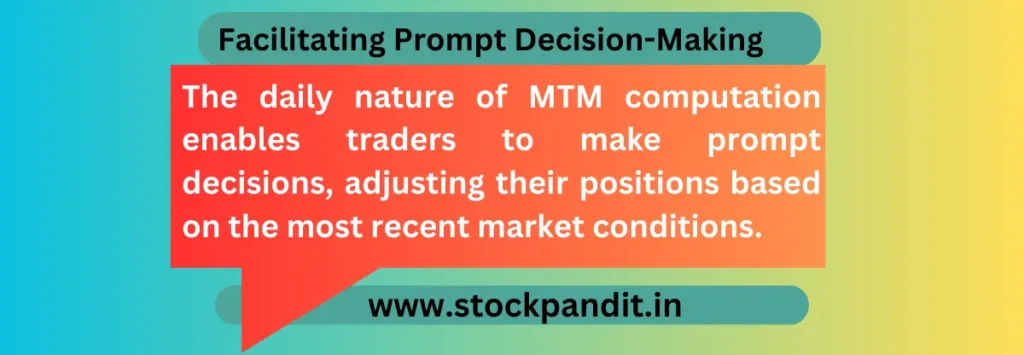
Mastering Risk Management with Mark-To-Market in Online Trading
In online trading, mark-to-market (MTM) is crucial since it provides an accurate picture of a security’s actual worth as opposed to its initial cost. MTM provides an extra degree of protection when paired with a trailing stop-loss order. It limits possible losses by automatically selling a security if its price falls to a certain threshold.
MTM Is An Essential Instrument For Risk Reduction
Your position is liquidated if the price over the threshold of your stop-loss order. Because of this characteristic, MTM is an essential instrument for risk reduction, protecting against large losses.
Additionally, MTM gives traders the ability to strategically leverage their positions in order to maximize returns while being aware of possible hazards.
Even though MTM is a powerful tool, it must be used carefully. It has the potential to revolutionize trading, but its successful application calls for perseverance and consistency.
In any event, as the video below shows, MTF is a useful tool.
What is the purpose of Mark-to-Market (MTM) in the market?
Answer: MTM serves the essential purpose of determining an asset’s fair value, providing clarity for all parties involved in the market.
How does MTM work for financial assets, including stocks, futures, and options?
Answer: MTM offers a precise representation of an asset’s present value, accounting for changing market conditions and ensuring an accurate picture of a business’s financial performance.
What role does MTM play in the Margin Trading Facility (MTF)?
Answer: In the MTF, MTM is crucial for updating securities’ values daily, determining necessary margins, and preventing traders from taking on more than they can handle.
Can you provide an example of MTM in the Margin Trading Facility (MTF)?
Answer: Certainly. In the MTF, a trader’s pledged securities’ Mark-to-Market value dictates the necessary margin, with potential consequences like margin calls and securities liquidation.
How does MTM function as a tool for stock market risk management?
Answer: MTM provides real-time risk evaluation by comparing transaction prices and closing prices, helping traders monitor daily gains and losses and plan their moves accordingly.
What is the significance of MTM in trading futures and options?
Answer: MTM values futures and options contracts at the market rate, aiding in daily gain or loss determination and understanding margin requirements for derivatives.
Why is effective risk management crucial in trading, as highlighted by MTM computation?
Answer: Effective risk management, emphasized by MTM computation, is integral to safeguard overall trading capital and manage potential losses promptly.
What strategies can traders employ to mitigate risks identified through MTM computation?
Answer: Traders can employ strategies like setting stop-loss orders and diversifying portfolios to mitigate risks identified through MTM computation.
How does MTM computation impact real-world trading decisions?
Answer: Real-world examples and case studies illustrate how MTM computation plays a crucial role in shaping trading decisions, preserving capital, and optimizing profits.
Is MTM suitable for all traders, and how should it be approached?
Answer: While MTM is a powerful tool, it must be used carefully. Its successful application calls for perseverance and consistency, making it suitable for traders who approach it cautiously.
